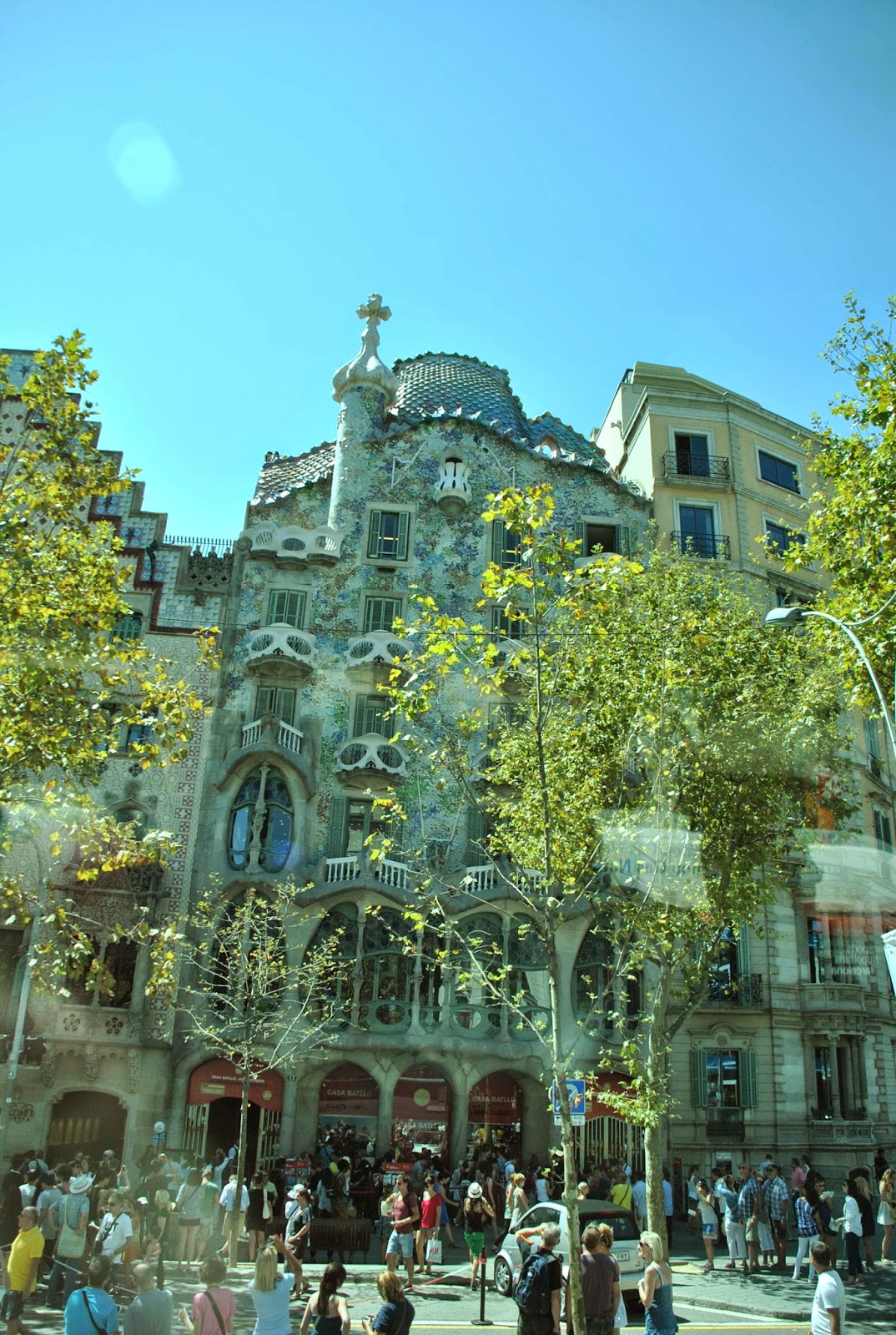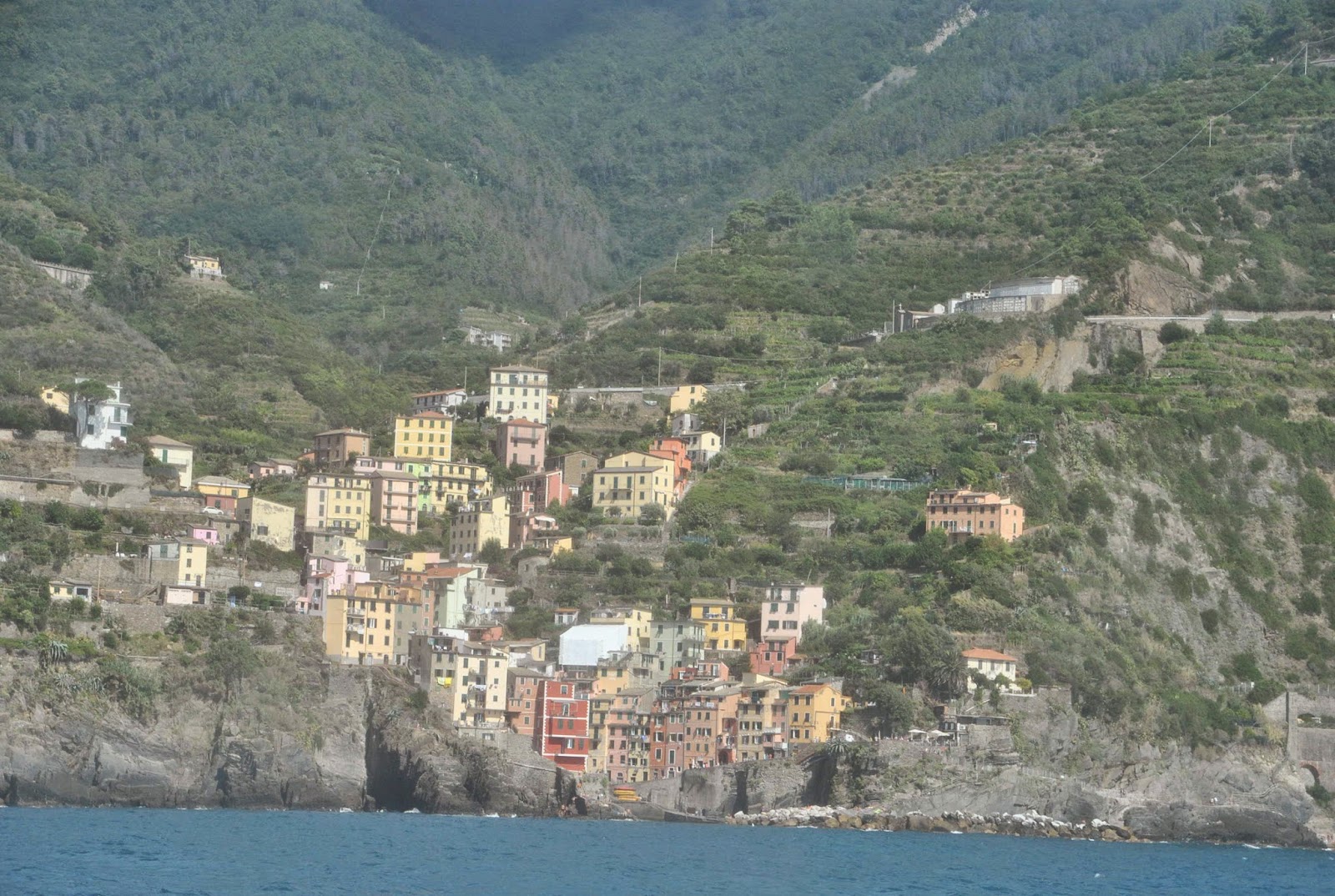....Gibraltar! Yes, it is turning into that kind of a trip!
Backtracking just a bit, after three consecutive days in
port, Thursday was a most welcome sea day. The weather was sunny, warm and
clear, which meant we spent almost all of it inside the ship at the various
lectures. One of the things we enjoy about Crystal is the varied lecturers they
bring onboard to give presentations on the sea days, and this one is no
exception. A port lecturer, talking about the upcoming ports of call, a
geo-politics lecturer, talking about the Middle East, and a special interest
lecturer, in this case Ken Walsh, who has covered the White House since the
Reagan years. Between them, lunch and updating the blog, it was soon time to
put on the Formal wear for the Captain's Welcome Aboard Evening. A mere five
days AFTER we actually boarded! Ah well, better late than never, and a nice day
was had by all.
Friday morning we were up bright and early, so much so the
sun had not yet peeked above the horizon, for our tour in Gibraltar, The Rock
by Foot. It was still rather "early morning" dark when we sailed in,
but "The Rock" was on our side of the ship, so this was our first
view;
Oddly enough, it really doesn't look anything like it does in the Prudential Insurance ads!!
Gibraltar has a population of about 30,000 permanent
residents living in the City of Gibraltar which has spread all the way around
the base of The Rock. After meeting our local guide, a rather colourful fellow
by the name of Alan, we set off as part of a small fleet of minibuses on our
tour. First stop, the cable car to the summit of The Rock, arriving so early it
wasn't even running yet! Felt a little sorry for the bleary-eyed young fellow who
had to come to work an hour early to ferry tourists to the top! The top station
is actually somewhat below the highest point of Gibraltar, but the view is
spectacular!
After a brief bathroom/coffee/photo stop, Alan gave us a
brief history lesson about the growth of the city of Gibraltar and the
territory in general, followed by "The Monkey Briefing". One of the other things that The Rock is famous for
is its resident colony of about 200 Macaques. They have lived on Gibraltar for
possibly as long as 200 years, and they have absolutely no fear of man. In
fact, quite the opposite, they have "struck fear" in tourists
visiting Gibraltar for years. The instructions for the tour said quite
specifically, no jewellery, earrings, dangling bracelets, or anything bright
and shiny that might attract attention, unless
you were prepared to let the monkeys have it! Our ship escort even took off
her name tag!! Alan's instructions were fairly simple, if a monkey lands on
your shoulder, or grabs your arm or leg, try not to panic and let him deal with
it. Easy for HIM to say! So prepared for who knew what, we set out, and found
almost no "monkey business", just a few spread out along the road
mostly minding their business and foraging for breakfast. As I said, we were
kind of early! We did, however, see a few babies, the youngest Alan estimated
as not much more than a week old.
 |
| This family (you can just see Dad on the far side) had a few of us trapped on a staircase for a few minutes. |
Over the next two hours, we climbed to within about 200 feet
of the summit of the Rock, visited St. Michael's Cave, a natural cave within
the rock itself, as well as the Great Siege Tunnels.
 |
| One stalagmite had been cut and polished to see just how old it might be. At least 250,000 years! |
Gibraltar had originally belonged to Spain, but was deeded
to the British after one of the interminable wars of the 1600 - 1800's. Sometime
in the late 1700's, the Spanish decided they wanted it back, so laid siege to
Gibraltar for something like 18 months, forcing the British Garrison to
construct a tunnel network into the top third of the Rock, from which they were
able to hold off the Spanish until relief arrived from England. During the
First and Second World Wars, this tunnel network was greatly expanded, and
while we did not see any of that work, what we saw was most impressive
considering it was done mostly by hand over a period of several months, during
which the tunnellers never saw daylight, or had much in the way of fresh air
either!
 |
| One of the scenes set up inside the caves. Another one, of the officers quarters, has a guard saying 'Halt! Who goes there?' every time somebody walks by - and there are lots of visitors. |
After leaving the tunnels we drove back down from the Rock
and through "downtown" Gibraltar, most of which is contained within the walls of the
old fortress area. Along the way we passed The Tower, used for executions
during British colonial times, it now serves as the town jail, capacity 62
"guests".
Alan told us that while crime is not an issue, during the
13 years, from 1969 to 1982, that the Spanish closed the border (Francisco
Franco being highly PO'ed at the Brits for something or other) crime actually
dropped to zero, and the town jail was used to store food and other supplies
brought by ship from Britain. Now days, while the Spanish border police can be
a pain, some 10,000 workers (including Alan) cross into Gibraltar from Spain to
work. All of them using that single road from the border that really does cross
the runway of the International Airport!
Although we had seen the pictures on the web, until we saw it with our own
eyes, we really were not sure they were real! We didn't get much of a city
tour, so we'd really like to come back and check it out on a full day's port
stop. They say that in some respects, the Gibraltar people are more British
than the British, and we did see some really nice looking pubs as we drove by.
 |
| Not only does this road cross the airport runway, but those buildings in the centre of the photo are the border with Spain. |
 |
| Yes, that's how close the shipping port is to the airport! |
After leaving Gibraltar in the early afternoon, we next had
to cross through the famed Strait of Gibraltar to get from the Mediterranean
Sea to the Atlantic Ocean. We had always pictured in our minds sailing past
this huge rock that, of course, looked just like that Prudential Insurance logo.
In reality, the strait is anywhere from 9 to 13 miles wide, not that narrow
little passage that many people visualize. Had we been awake and on the bridge
during our approach around 4:00 in the morning, we would have been able to see the
mythical Pillars of Hercules. About 20 miles out, a sailor can only see the tip
of Gibraltar on one side and the northernmost peak of the Atlas Mountains on
the other. We're not sure where Hercules comes into it, but it has been
referred to this way for a very long time.
Here are some photos of our sailout and the Strait:
 |
| Gibraltar - looks more like a cruise ship, doesn't it? |
 |
| Looking over at the Atlas Mountains in Morocco. Took this photo while we were walking in the morning. |
 |
| The strait is relatively narrow at Gibraltar. On the left is Morocco, on the right, Spain. |
Tomorrow we will be in Lisbon. Our tour guide couldn't figure out why we needed 12 hours to get there; apparently you can do it in 4 hours by car!


























































